Three ice skaters meet at the center of a rink and each stands at rest facing the center, within arm's reach of the other two. On a signal, each skater pushes himself away from the other two across the frictionless ice. After the push, skater A with mass mA = 70.0 kg moves in the negative y-direction at 2.50 m/s and skater B with mass mB = 75.0 kg moves in the negative x-direction at 3.00 m/s. Find the x- and y-components of the 90.0 kg skater C's velocity (in m/s) after the push.
Three ice skaters meet at the center of a rink and each stands at rest facing the center, within arm's reach of the other two. On a signal, each skater pushes himself away from the other two across the frictionless ice. After the push, skater A with mass mA = 70.0 kg moves in the negative y-direction at 2.50 m/s and skater B with mass mB = 75.0 kg moves in the negative x-direction at 3.00 m/s. Find the x- and y-components of the 90.0 kg skater C's velocity (in m/s) after the push.
Principles of Physics: A Calculus-Based Text
5th Edition
ISBN:9781133104261
Author:Raymond A. Serway, John W. Jewett
Publisher:Raymond A. Serway, John W. Jewett
Chapter8: Momentum And Collisions
Section: Chapter Questions
Problem 31P
Related questions
Topic Video
Question
100%
Three ice skaters meet at the center of a rink and each stands at rest facing the center, within arm's reach of the other two. On a signal, each skater pushes himself away from the other two across the frictionless ice. After the push, skater A with mass
mA = 70.0 kg
moves in the negative y-direction at 2.50 m/s and skater B with mass
mB = 75.0 kg
moves in the negative x-direction at 3.00 m/s. Find the x- and y-components of the 90.0 kg skater C's velocity (in m/s) after the push. Expert Solution
This question has been solved!
Explore an expertly crafted, step-by-step solution for a thorough understanding of key concepts.
This is a popular solution!
Trending now
This is a popular solution!
Step by step
Solved in 4 steps with 4 images

Knowledge Booster
Learn more about
Need a deep-dive on the concept behind this application? Look no further. Learn more about this topic, physics and related others by exploring similar questions and additional content below.Recommended textbooks for you

Principles of Physics: A Calculus-Based Text
Physics
ISBN:
9781133104261
Author:
Raymond A. Serway, John W. Jewett
Publisher:
Cengage Learning
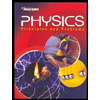
Glencoe Physics: Principles and Problems, Student…
Physics
ISBN:
9780078807213
Author:
Paul W. Zitzewitz
Publisher:
Glencoe/McGraw-Hill
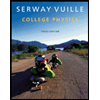
College Physics
Physics
ISBN:
9781285737027
Author:
Raymond A. Serway, Chris Vuille
Publisher:
Cengage Learning

Principles of Physics: A Calculus-Based Text
Physics
ISBN:
9781133104261
Author:
Raymond A. Serway, John W. Jewett
Publisher:
Cengage Learning

Glencoe Physics: Principles and Problems, Student…
Physics
ISBN:
9780078807213
Author:
Paul W. Zitzewitz
Publisher:
Glencoe/McGraw-Hill

College Physics
Physics
ISBN:
9781285737027
Author:
Raymond A. Serway, Chris Vuille
Publisher:
Cengage Learning
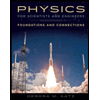
Physics for Scientists and Engineers: Foundations…
Physics
ISBN:
9781133939146
Author:
Katz, Debora M.
Publisher:
Cengage Learning
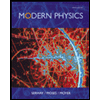
Modern Physics
Physics
ISBN:
9781111794378
Author:
Raymond A. Serway, Clement J. Moses, Curt A. Moyer
Publisher:
Cengage Learning
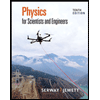
Physics for Scientists and Engineers
Physics
ISBN:
9781337553278
Author:
Raymond A. Serway, John W. Jewett
Publisher:
Cengage Learning